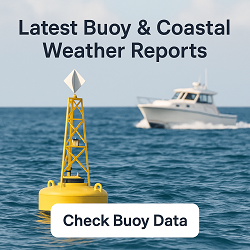Jay Em, WY Weather Forecast and Current Conditions (82219)
Current Conditions

Feels Like 39°F
at
Current Conditions

Feels Like 39°F
at
Point Forecast at a Glance







This Date in Weather History
1970 - Widespread flooding took place across Puerto Rico. Rainfall amounts for the day ranged up to seventeen inches at Aibonito. A slow moving tropical depression was responsible for six days of torrential rains across the island. Totals in the Eastern Interior Division averaged thirty inches, with 38.4 inches at Jayuya. Flooding claimed eighteen lives, and resulted in 62 million dollars damage.
More on this and other weather history
Jay Em 7 Day Weather Forecast Details
Tuesday Oct 7

Day: Areas of frost before 9am. Sunny, with a high near 62. South southeast wind 0 to 5 mph.

Night: Mostly clear, with a low around 39. Southeast wind 5 to 10 mph.
Wednesday Oct 8

Day: Sunny, with a high near 77. South wind 5 to 10 mph.

Night: Mostly clear, with a low around 39. South southwest wind 0 to 5 mph.
Thursday Oct 9

Day: Sunny, with a high near 80.

Night: Mostly clear, with a low around 42.
Friday Oct 10

Day: Mostly sunny, with a high near 77.

Night: A slight chance of rain showers after midnight. Mostly cloudy, with a low around 49.
Saturday Oct 11

Day: Mostly sunny, with a high near 79.

Night: A slight chance of rain showers before midnight. Mostly cloudy, with a low around 47.
Sunday Oct 12

Day: Mostly sunny, with a high near 70.

Night: A slight chance of rain showers before midnight. Partly cloudy, with a low around 34.
Monday Oct 13

Day: Sunny, with a high near 60.
Sun & Moon Monthly
Sunrise 7:02 AM
Sunset 6:30 PM
Last Light 6:58 PM
Moonset 7:37 AM

Contiguous United States Extremes
Mon's High Temperature
100 at 7 Miles East-southeast Of Hidalgo, TX and 2 Miles North-northeast Of La Puerta, TX and Mcallen, TX
Mon's Low Temperature
11 at 32 Miles West-southwest Of Bynum, MT
Weather Folklore
Trout jump high when a rain is nigh.
Current subscribers - login to your ClearSky account
About Jay Em, Wyoming
Jay Em is an unincorporated community in northern Goshen County, Wyoming, United States, just below the headwaters of the Rawhide Creek, on the old Texas Trail. It lies along U.S. Route 85, 35 miles north of the city of Torrington, the county seat of Goshen County. Its elevation is 4,590 feet (1,399 m). Although unincorporated, Jay Em has a post office, with ZIP code 82219.
Content from Wikipedia, licensed under CC BY-SA 3.0.
How We Provide Better Local Weather
Current conditions: We use the nearest available station to your location - including professional MESONET/MADIS and local weather stations - often miles closer than regional airports.
Forecasts: National Weather Service point forecasts predict for your specific area, not broad regional zones, making them far more relevant to your location.

